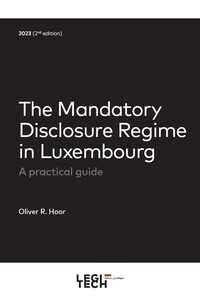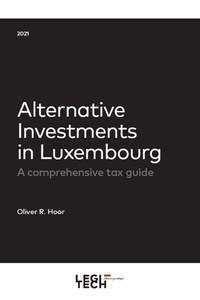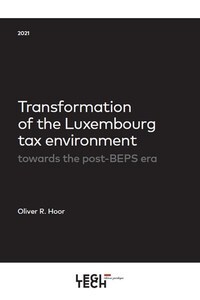Nous utilisons des cookies pour améliorer votre expérience. Pour nous conformer à la nouvelle directive sur la vie privée, nous devons demander votre consentement à l’utilisation de ces cookies. En savoir plus.
A GUIDE TO THE LUXEMBOURG-GERMANY TAX TREATY
EAN : 9782919814404
Paru le : 11 oct. 2022
-
 Livraison gratuite
Livraison gratuite
en France sans minimum
de commande -
 Manquants maintenus
Manquants maintenus
en commande
automatiquement -
 Un interlocuteur
Un interlocuteur
unique pour toutes
vos commandes -
 Toutes les licences
Toutes les licences
numériques du marché
au tarif éditeur -
 Assistance téléphonique
Assistance téléphonique
personalisée sur le
numérique -
 Service client
Service client
Du Lundi au vendredi
de 9h à 18h
- EAN13 : 9782919814404
- Réf. éditeur : LT0000
- Collection : FISCALITE TRANS
- Editeur : Legitech
- Date Parution : 11 oct. 2022
- Disponibilite : Disponible
- Barème de remise : NS
- Nombre de pages : 272
- Format : 1.60 x 17.00 x 24.00 cm
- Poids : 476gr
-
Résumé :
Bilateral tax treaties are a cornerstone of the international tax landscape and play a vital role in the global economy, attempting to reconcile the complex and ever-changing domestic tax laws of the contracting states. The main purpose of tax treaties is to foster cross-border investment and business activities albeit the more recent focus of the OECD was on the tackling of perceived tax treaty abuses.
The economies of Luxembourg and the Federal Republic of Germany are particularly intertwined. Luxembourg is a financial centre, a major fund location and the location of choice for establishing holding companies. As such, the Federal Republic of Germany is one of the main investment jurisdictions and a key investor jurisdiction of Luxembourg companies and investment funds.The tax treaty concluded between the Grand Duchy of Luxembourg and the Federal Republic of Germany (the "Tax Treaty") entered into force on 30 September 2013 and became effective as from 1 January 2014, replacing the former tax treaty signed back in 1958. The Tax Treaty was largely drafted along the lines of the 2010 version of the OECD Model Tax Convention. The Tax Treaty is further complemented by a protocol that forms an integral part of the Tax Treaty.
This guide provides a clear understanding of the Tax Treaty and anticipates the changes resulting from the OECD Multilateral Convention to Implement Tax Treaty Related Measures to Prevent Base Erosion and Profit Shifting («Multilateral Instrument" or "MLI"). Charts, overviews and checklists will accompany the reader in assessing the vital elements to consider in each tax analysis. Tax advisers and practitioners should gain substantially from the insights provided in this book.








